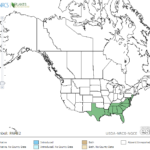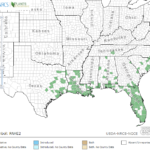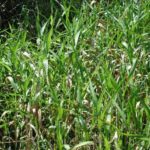Panicum hemitomon
USDA, NRCS. 2018. The PLANTS Database (http://plants.usda.gov, 28 March 2018). National Plant Data Team, Greensboro, NC 27401-4901 USA.
Illustration courtesy of University of Florida/IFAS Center for Aquatic and Invasive Plants. Used with permission.
What is Maidencane?
Physical Characteristics
Leaves:
- 4-9.84 inches long
- 0.28-0.59 inches wide
- Usually rough on top
- Smooth on bottom
Flowers:
- Loose or branching
- Grow in clusters
- Very thin
- 6-12 inches long
- Branches straight
- Branches about 0.78-4 inches long
- Attached at the base
- 0.09-0.11 inches long
- Sword-shaped
- Fleshy
Stem:
- Creeping
- Have tubes with overlapping sheaths
Upright Stem:
- Hollow
- 1.75-5 feet tall
- Usually hard
- Fleshy sheaths
Maidencane is part of a family of perennial grasses that are common but somewhat hard to tell apart.
Where Does it Grow?
Maidencane can be found on the banks of lakes, ponds, and streams and in the shallow water of lakes and ponds.
Pros and Cons of Maidencane
Muskrat and nutria will consume the rhizomes of maidencane. Submerged portions of all aquatic plants provide habitats for many micro and macro invertebrates. These invertebrates in turn are used as food by fish and other wildlife species (e.g. amphibians, reptiles, ducks, etc.). After aquatic plants die, their decomposition by bacteria and fungi provides food (called “detritus”) for many aquatic invertebrates.







